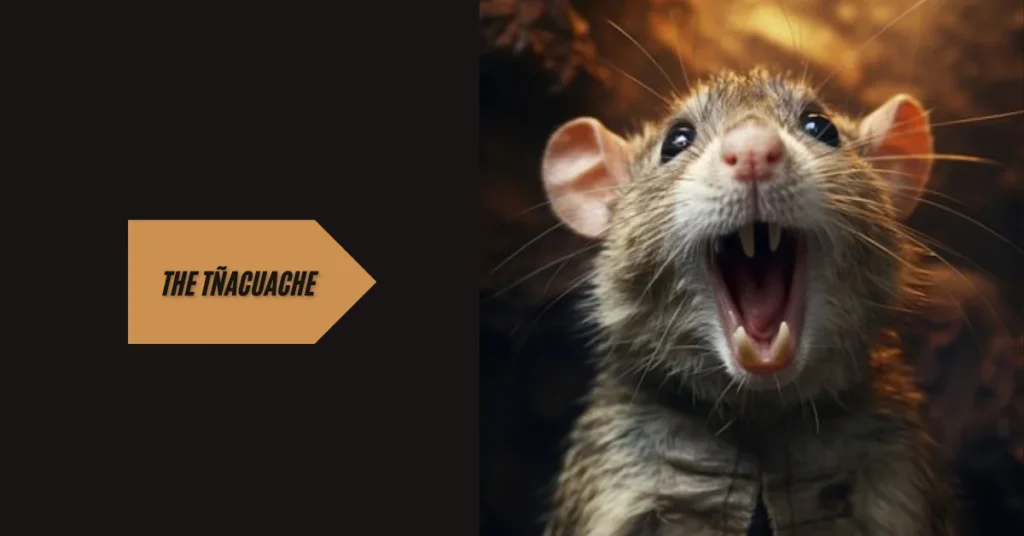Introduction to the Tñacuache
Meet the Tñacuache, a fascinating creature that roams the landscapes of Mexico. Often referred to as the opossum, this marsupial is not just an ordinary animal; it’s a symbol of resilience and adaptability in the wild. With its unique appearance and intriguing behaviors, the Tñacuache has captured the hearts of many. From city streets to rural areas, these nocturnal beings play a vital role in their ecosystems while holding significant cultural importance. Join us on this journey as we delve into what makes the Tñacuache such an emblematic figure in Mexican wildlife and explore how it contributes to both nature and tradition. Prepare to be amazed by one of Mexico’s most underrated inhabitants!
Characteristics and Habitat of the Tñacuache
The Tñacuache, also known as the opossum, is a fascinating marsupial native to Mexico. With its distinctive grayish fur and pointed snout, this creature stands out in the wild. Its prehensile tail adds an extra layer of agility, allowing it to navigate trees with ease.
These nocturnal animals thrive in diverse habitats, from dense forests to urban areas. They are adaptable survivors that can comfortably inhabit both rural and suburban settings. Their ability to scavenge for food makes them opportunistic eaters; they enjoy fruits, insects, and even small vertebrates.
Tñacuaches often seek shelter in hollow trees or burrows during the day. This gives them protection from predators while they rest up for their nighttime adventures. Their unique features and behaviors make them essential members of the ecosystems they inhabit.
Importance of Tñacuaches in Mexican Culture and Ecosystem
The Tñacuache, or opossum, holds a cherished place in Mexican culture. This creature is often featured in folklore and storytelling, symbolizing resilience and adaptability. Its unique characteristics make it a fascinating subject for Mexican art and literature.
Ecologically, the Tñacuache plays a pivotal role as a scavenger. By consuming carrion, it helps maintain the balance of local ecosystems. This natural cleaning service prevents the spread of disease and supports nutrient cycling within its habitat.
Additionally, these marsupials are vital for seed dispersal. As they forage for food, they inadvertently transport seeds to new locations which promotes plant diversity. Their presence contributes significantly to healthy forest systems across Mexico.
Understanding their cultural significance enriches our appreciation of this remarkable animal while highlighting how interconnected our lives are with other species on this planet.
Threats to the Survival of Tñacuaches
The Tñacuache faces numerous threats that jeopardize its survival in the wild. Urban expansion is one of the biggest challenges. As cities grow, their natural habitats shrink, leaving these creatures with fewer places to thrive.
Pollution also plays a significant role. Chemicals and waste can contaminate food sources. This leads to health issues for the Tñacuache and disrupts their reproductive cycles.
Road traffic poses another danger. These nocturnal animals often venture onto roads while scavenging for food, resulting in fatal accidents.
Additionally, hunting remains a concern despite legal protections. Some still see them as pests or sources of entertainment.
Climate change cannot be overlooked either. Altered weather patterns affect their habitat and food availability, making survival even harder for this remarkable marsupial.
Conservation Efforts and Success Stories
Conservation efforts for the Tñacuache are gaining momentum across Mexico. Various organizations are working tirelessly to create awareness about this fascinating marsupial. Education programs in schools emphasize its ecological role and unique characteristics.
Community-led initiatives also play a vital part. Local groups have come together to protect habitats, ensuring that these nocturnal creatures can thrive in their natural environments.
One notable success story involves a rewilding project in central Mexico that has seen Tñacuaches return to areas where they had previously vanished. This resurgence is not only heartening but serves as motivation for further conservation work.
Efforts extend beyond borders too, with international collaborations focusing on research and habitat preservation. Programs aimed at reducing roadkill incidents have shown promise, highlighting the importance of safe passageways for wildlife.
These stories inspire hope and demonstrate how collective action can lead to positive change for the Tñacuache and its ecosystem.
How You Can Help Protect the Tñacuache
You can make a difference for the Tñacuache in several ways. Start by spreading awareness about their importance in ecosystems and Mexican culture. Share information on social media or with friends to educate others.
Participate in local conservation efforts or volunteer with wildlife organizations focused on protecting these marsupials. Many groups need help with habitat restoration, research, and public outreach.
Creating a suitable environment at home is also essential. If you have pets, ensure they are kept indoors during nighttime when Tñacuaches are most active. This simple action reduces the risk of encounters that could harm them.
Support sustainable practices that benefit wildlife habitats. Choose eco-friendly products and advocate for responsible land use policies that protect natural spaces where Tñacuaches thrive.
Every small step counts in preserving this unique species for future generations to enjoy.
Conclusion
The Tñacuache holds a unique place in the tapestry of Mexican wildlife. From its fascinating characteristics to its vital role in local culture and ecosystems, it is a creature that deserves our attention and respect. As threats continue to loom over their population, awareness and proactive measures are essential for ensuring their survival.
Conservation efforts have shown promising results, demonstrating that when communities come together, change is possible. With your involvement and dedication, more success stories can emerge. Every action counts—whether it’s spreading awareness or supporting local organizations.
Protecting the Tñacuache means safeguarding an emblem of Mexico’s natural heritage. Let’s be vigilant stewards of this remarkable species so future generations can appreciate its beauty and significance as we do today.
FAQs
Q : What does “tñacuache” mean?
Ans: “Tñacuache” is a term used in Mexico and Central America to refer to the common opossum, known for its distinctive features.
Q : Why is the tñacuache considered an emblem of Mexican wildlife?
Ans: The tñacuache symbolizes resilience and adaptability in the wild, representing the rich biodiversity and folklore of Mexico.
Q : What are the physical characteristics of the tñacuache?
Ans: The tñacuache has a long tail, pointed snout, and grayish fur, with a size comparable to that of a domestic cat.
Q : How does the tñacuache contribute to its habitat?
Ans: As a scavenger, the tñacuache plays a vital role in controlling pests and recycling nutrients, enhancing ecosystem health.
Q : Are tñacuaches harmful to humans?
Ans: Tñacuaches are generally not harmful; they are shy creatures that avoid confrontation and can help reduce pests around homes.







